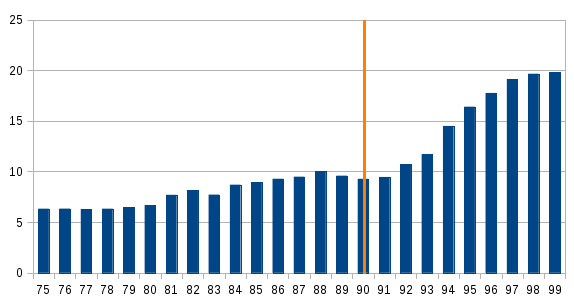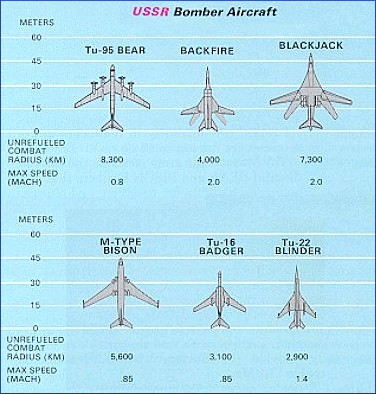|
Railway Privatisation In Argentina
Railway privatisation in Argentina was a process which began in 1989 under the presidency of Carlos Menem, following a series of neoliberalism, neoliberal economic reforms. This primarily consisted of breaking up the state-owned railway company Ferrocarriles Argentinos (FA) and allowing the former lines to be operated by private companies instead of the state. This policy was met with widespread criticism and proved catastrophic for the Argentine railways whose service worsened significantly in the years that followed, with entire lines closing and infrastructure deteriorating beyond repair. Privatisation was ultimately reversed in 2015 with the creation of Nuevos Ferrocarriles Argentinos. Background Since railway nationalisation in 1948, during the presidency of Juan Perón, the network had been operated by the state-owned company Ferrocarriles Argentinos (FA) which comprised the six relatively independent divisions, Domingo Sarmiento Railway, Sarmiento, General Bartolomé Mi ... [...More Info...] [...Related Items...] OR: [Wikipedia] [Google] [Baidu] |
Carlos Menem
Carlos Saúl Menem (2 July 1930 – 14 February 2021) served as the 50th president of Argentina for ten years, from 1989 to 1999. He identified as Peronism, Peronist, serving as President of the Justicialist Party for 13 years (from 1990 to 2001 and again from 2001 to 2003), and his political approach became known as Menemism. Born in Anillaco, La Rioja Province, Argentina, La Rioja, to a Syrian Argentines, Syrian family, Menem was raised as a Muslim,"Carlos Menem" ''Encyclopædia Britannica'' but later converted to Catholic Church, Roman Catholicism to pursue a political career. Menem became a Peronist during a visit to Buenos Aires. He was elected governor of La Rioja in 1973, deposed and detained following the 1976 Argentine coup d'état, and re-elected in 1983. He defeated the Buenos Aires governor Antonio Cafiero in ... [...More Info...] [...Related Items...] OR: [Wikipedia] [Google] [Baidu] |
NCA EVC Mayo 2011
NCA may refer to: Businesses and organisations Australia * National Capital Authority, a government authority for development planning of the Capital Territory * National Crime Authority, defunct investigative agency European Union * National Competent Authorities, referring to the country-level agencies participating in EU policy frameworks such as European Union competition law or European Banking Supervision India * Nuclear Command Authority (India) * National Cricket Academy Ireland * National Consumer Agency, a defunct government body * National Cycling Association, a defunct sports governing body Norway * Norwegian Church Aid, a charity * Norwegian Coastal Administration, a government agency Pakistan * National College of Arts, Lahore * National Command Authority (Pakistan) United Kingdom * National Campaign for the Arts, a lobbying group * National Character Area, a type of region in England * National Crime Agency, a law-enforcement agency * The Northern Care Alli ... [...More Info...] [...Related Items...] OR: [Wikipedia] [Google] [Baidu] |
América Latina Logística
The Americas, sometimes collectively called America, are a landmass comprising the totality of North America and South America.''Webster's New World College Dictionary'', 2010 by Wiley Publishing, Inc., Cleveland, Ohio. When viewed as a single continent, the Americas or America is the 2nd largest continent by area after Asia, and is the 3rd largest continent by population. The Americas make up most of the land in Earth's Western Hemisphere and comprise the New World. Along with their associated islands, the Americas cover 8% of Earth's total surface area and 28.4% of its land area. The topography is dominated by the American Cordillera, a long chain of mountains that runs the length of the west coast. The flatter eastern side of the Americas is dominated by large river basins, such as the Amazon, St. Lawrence River–Great Lakes, Mississippi, and La Plata basins. Since the Americas extend from north to south, the climate and ecology vary widely, from the arctic tundra of No ... [...More Info...] [...Related Items...] OR: [Wikipedia] [Google] [Baidu] |
Brazil
Brazil, officially the Federative Republic of Brazil, is the largest country in South America. It is the world's List of countries and dependencies by area, fifth-largest country by area and the List of countries and dependencies by population, seventh-largest by population, with over 212 million people. The country is a federation composed of 26 Federative units of Brazil, states and a Federal District (Brazil), Federal District, which hosts the capital, Brasília. List of cities in Brazil by population, Its most populous city is São Paulo, followed by Rio de Janeiro. Brazil has the most Portuguese-speaking countries, Portuguese speakers in the world and is the only country in the Americas where Portuguese language, Portuguese is an Portuguese-speaking world, official language. Bounded by the Atlantic Ocean on the east, Brazil has a Coastline of Brazil, coastline of . Covering roughly half of South America's land area, it Borders of Brazil, borders all other countries and ter ... [...More Info...] [...Related Items...] OR: [Wikipedia] [Google] [Baidu] |
Belgrano Cargas
Belgrano Cargas S.A. was an Argentine state-owned company which operated the gauge freight rail network built by Central Northern and Province of Santa Fe Railways, which became part of Belgrano Railway network after railway nationalization of 1948. The network operated by Belgrano Cargas extended through the provinces of Buenos Aires, Santa Fe, Córdoba, Mendoza, Santiago del Estero, San Juan, La Rioja, Catamarca, Tucumán, Chaco, Formosa, Salta and Jujuy. The line also reached all of Argentina's neighbouring countries, such as Bolivia, Uruguay, Brazil, Chile and Paraguay. In more recent years, the name ''Belgrano Cargas'' is often erroneously used by the Argentine government and press to refer to the entirety of the country's freight network, and more specifically those parts operated by Belgrano Cargas y Logística. The name has stuck despite the freight network encompassing numerous other Argentine railways, of which the General Belgrano Railway is only one ... [...More Info...] [...Related Items...] OR: [Wikipedia] [Google] [Baidu] |
Nuevo Central Argentino
Nuevo Central Argentino S. A. (abbreviated NCA) is an Argentine company that utilises the operation and infrastructure of the national railway system of the former Mitre Railway division of Ferrocarriles Argentinos, by a concession granted on 23 December 1992 as part of railway privatisation carried out during the presidency of Carlos Menem. NCA operates about 5,000 km of cargo railroad lines in the provinces of Buenos Aires, Santa Fe, Córdoba, Santiago del Estero and Tucumán. Its headquarters are located in Rosario (province of Santa Fe); its warehouses are located in Rosario, in nearby Villa Gobernador Gálvez, and in Villa María (province of Córdoba). There are also operational centers in Colombres and Córdoba City, and transfer ( truck changing?) centers in the city of Tucumán and in Retiro, Buenos Aires. NCA, which is owned by Aceitera General Deheza S.A., [...More Info...] [...Related Items...] OR: [Wikipedia] [Google] [Baidu] |
Techint
Technical intelligence (TECHINT) is intelligence about weapons and equipment used by the armed forces of foreign nations. The related term, scientific and technical intelligence, addresses information collected or analyzed about the broad range of foreign science, technology, and weapon systems. Technical intelligence Technical intelligence is intended primarily to counter technological surprise. Knowledge of the characteristics and capabilities of enemy weapons allows nations to develop effective countermeasures for them. Occasionally, armed forces adopt technology developed by foreign nations. The jerrycan of World War II is an example of foreign equipment adopted by the US Army. Technical intelligence should not be confused with intelligence obtained "by technical means". That is a term of art used in discussion of disarmament to mean information gathered by various sorts of cameras, sensors, or other devices. Technical intelligence is the product: "technical intelligence— ... [...More Info...] [...Related Items...] OR: [Wikipedia] [Google] [Baidu] |
Ferroexpreso Pampeano
Ferroexpreso Pampeano S.A. (abbreviated FEPSA) is an Argentine private railway company that operates freight services over a network that comprises broad gauge Sarmiento Railway and the Rosario and Puerto Belgrano section of Roca Railway. FEPSA is currently owned by Sociedad Comercial del Plata (SCP), and Techint, two of the largest companies in Argentina. FEPSA's operating fleet includes 52 diesel locomotives and 2,106 wagons. History After the entire Argentine rail network was privatised in the early 1990s, the Government of Argentina granted a concession to the company to operate freight services within provinces of Buenos Aires and La Pampa but with branches extending into neighbouring Córdoba, San Luis and Santa Fe provinces. The former Rosario and Puerto Belgrano Railway section is the most heavily used branch. Ferroexpreso Pampeano started operations in November 1991. In 2014, Ferroexpreso Pampeano carried 350,000 tonnes of foodstuffs and 3,500,009 tonnes of f ... [...More Info...] [...Related Items...] OR: [Wikipedia] [Google] [Baidu] |
Loma Negra
Loma Negra Companía Industrial Argentina S.A. is an Argentine manufacturer and the country's leading maker of cement, concrete, and lime. The company, established by businessman Alfredo Fortabat, also founded its own sports club, C.S.yD. Loma Negra three years later. After the passing of Alfredo Fortabat, his wife Amalia Lacroze took over the business. Loma Negra is currently a subsidiary of InterCement Participações, a company of the Brazilian conglomerate Mover Participações, which acquired it for USD 1,000 million. History The 1926 discovery of large limestone deposits by Alfredo Fortabat at his San Jacinto Estancia led to his decision to open a cement factory in the nearby pampas hamlet of Loma Negra (south of Olavarría); the choice of location prompted Fortabat to christen his new venture ''Loma Negra'' (''"Black Hillock"''). The cement plant was built in 1927, and by the early 1950s, this facility and one in nearby Barker produced 500,000 tons of cement annual ... [...More Info...] [...Related Items...] OR: [Wikipedia] [Google] [Baidu] |
Ferrosur Roca
Ferrosur Roca S.A. (FR) is a private company which operates freight services over part of the broad gauge that belongs to General Roca Railway. Some of the products transported by Ferrosur Roca include salt, clincker, plaster, cement, lime, cereals, fertilizers, coking coal, iron scrap, petroleum and fuel oil, among other items. The company transported a total of 5,258,301 tonnes of freight in 2014. The company, property of Mover Participações (formerly, ''Camargo Correa''), is 80% owned by the Cofesur group, 16% state-owned, and 4% owned by employees of the company through Personal de Ferrosur S.A. History After all the Argentine rail network was privatised during Carlos Menem's administration in early 1990s, concession was granted to Ferrosur Roca to operate freight services in the center and south of Argentina running on Ferrocarril Roca tracks. The company began its activities on March 12, 1993 over a rail network extending south and southwest from Buenos Aires t ... [...More Info...] [...Related Items...] OR: [Wikipedia] [Google] [Baidu] |
Bahía Blanca
Bahía Blanca (; English: ''White Bay''), colloquially referred to by its own local inhabitants as simply Bahía, is a city in the Buenos Aires Province, Buenos Aires province of Argentina, centered on the northwestern end of the eponymous Blanca Bay of the Argentine Sea. It is 4th largest city in the province, and the 16th largest in the country by metropolitan population. It is the seat of government of the Bahía Blanca Partido, with 336,574 inhabitants according to the . Bahía Blanca is the principal city in the Greater Bahía Blanca metropolitan area. The city has an important seaport with a depth of , kept constant upstream almost all along the length of the bay, where the Napostá Stream drains. ''Bahía Blanca'' means "White Bay". The name is due to the color of the salt covering the local soil surrounding the shores. The bay (which is an estuary) was seen by Ferdinand Magellan during his first circumnavigation of the world on the order of Charles I of Spain in 1520, lo ... [...More Info...] [...Related Items...] OR: [Wikipedia] [Google] [Baidu] |



